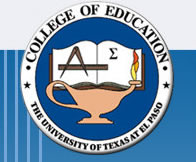
Bill Robertson, Ph.D. - Classes
Teacher Education Department
SCED 3311 - Curriculum Planning in Secondary Schools - Notes on Constructivism
The constructivist approach allows for experiences by the learner in order to address misconceptions and develop proper conceptual connections. (Rutherford and Algren, 1990). This instructional strategy allows the student to spend time exploring and explaining the process, with time for reflection and numerous experiences upon which to synthesize information.
Learning is the responsibility of the Learner, says John Dewey. He also stated that the curriculum should be aligned with the learner and the learner’s experiences, so that it could be seen as evolving and ever changing. For it is “the development of experience into action that is really wanted.” (Dewey, 1970)
Von Glasersfeld defines radical constructivism according to the conceptions of knowledge. He sees knowledge as being actively received either through the senses or by way of communication. It is actively constructed by the cognizing subject. Cognition is adaptive and allows one to organize the experiential world, not to discover an objective reality. (Von Glasersfeld, 1989)
For the instructor, new knowledge can be added incrementally at the beginning of each lesson. Regular time to share and collaborate should be woven into the classroom time, as well as extended periods to plan, research, develop and refine the work. A classroom is at its most constructivist when learners are constantly putting their new knowledge to use and building on their previous premises. The classroom should be active and filled with discussion and group interaction, with content information brought in appropriately to complement and refine experiences in conceptually correct understandings.
Meaning is a human construction with a social situation, we are always defining it for ourselves. Yet, one must beware of regarding the child’s point of view as “finally significant in themselves” (Dewey, 1970). Each learner understands content and concepts differently based on their previous experiences. The students need opportunities to address misconceptions and to develop concepts in real world situations. “Students come to school with their own ideas, some correct and some not, about almost every topic they are likely to encounter.” (Rutherford and Algren, 1990). Learning is the responsibility of the learner, but the teacher guides the student into developing meaning from content material and classroom experience.
Constructivism is a method to reach higher order thinking. In the realm of Bloom’s Taxonomy, there are six well described levels of learning. The first, knowledge, is reflected by a memorization of facts, language, principles and the like. The second, understanding, is the management of knowledge, or taking the facts and applying them to basic questions. The third level, application, shows a use of understanding, such that the student can apply the information to situations that have been shown or modeled to them. Yet, it is the final three stages where constructivism links best to Bloom’s Taxonomy. The fourth stage is analysis, the ability to disassemble the application or see the parts of the whole. The fifth stage is synthesis, where the learner can take examine the parts of application, and the whole and move freely between each area. Finally, the sixth stage is evaluation, which is the appraisal of understood synthesis and evaluation. A person who successfully explains a body of knowledge to others is said to have mastered this knowledge. In describing and explaining ideas to others, the learner provides an analysis of the information and then synthesizes the information and evaluates the information; all requiring what educators call higher order thinking.
For the curriculum developer, the curriculum must be designed so that it reflects real life situations. (Bentley, 1995). So much fascinating information is at the fingertips of learners everywhere, and with the increase in the affordability and availability of technology, more and more learners have access to information sources. In this vain, research based programs give students the ability to retain facts though critical thinking by working through problems logically and making connections to the real world. In The Process of Education, Jerome Bruner writes; “Students should know what it feels like to be completely absorbed in a problem. They seldom experience this feeling in school” (Bruner, 1962).
Historical events in education describe a time in the 1890s in which “traditional practices included the use of textbooks instead of real world experiences, harsh discipline and mindless recitations that required no active thought on the part of the children” (Bybee and Deboer, 1990). The textbook is a classroom resource, but not the only resource, and the nature of knowledge should incorporate multiple viewpoints and sources that include textbooks, the Internet, multimedia and other cources of content information. Knowledge is as much about the process as it is about content, and the two must be integrated effectively so that the learner sees the value of the content in a conceptually correct context (Hoehn, 1990). The goal again is to engage the learner is higher order thinking that includes analysis, synthesis and evaluation of material and information (Hoehn, 1990).
Syllabus | Schedule | Assignments | Readings | Evaluation | Samples

Bill Robertson, Ph.D. (robertson@utep.edu)
Teacher Education Department, College of Education, University of Texas at El Paso